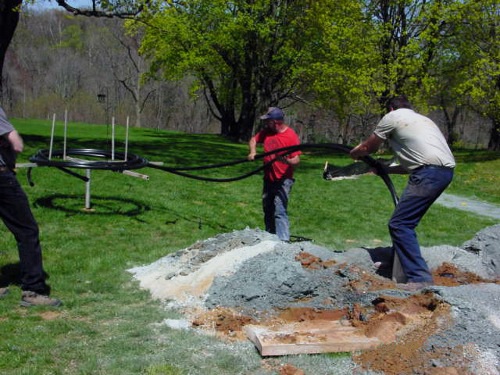

A geothermal closed loop has 3 basic parts: the pipe that is buried in the ground, the fluid within the pipes that is used to carry heat, and the pump(s) that keeps the fluid moving.
The pipe used for closed loops is almost always high-density polyethylene (HDPE), but PEX-a is also used. The pipe is available in various diameters and lengths. The number of loops of pipe and how deep they are buried are determined by the geographical location, the geological composition, and the amount of BTUH's the geothermal heat pump must transfer.
The fluid will be water or a water antifreeze mixture. Different antifreezes have different properties, and care must be used when choosing among them. For example, you could end up with an antifreeze that gels in your system, or one that is illegal to use in your area!
The loop pump(s) must be specifically calculated for each job. Tying back into what has already been discussed, the number of loops the earth loop is designed with, the diameter of the pipe in each loop, the length of the pipe in each loop, and the type of liquid heat exchanger in the geothermal heat pump, are the major factors in sizing the loop pump(s).
By giving careful consideration to each of these areas, the end result will be a correctly designed earth loop that will provide proper heat exchange to your geothermal heat pump project.
Purchase our closed loop design service